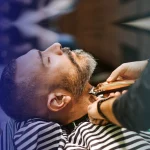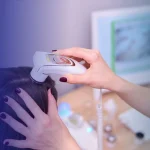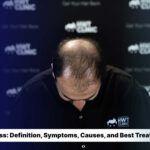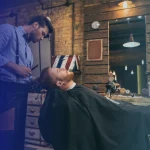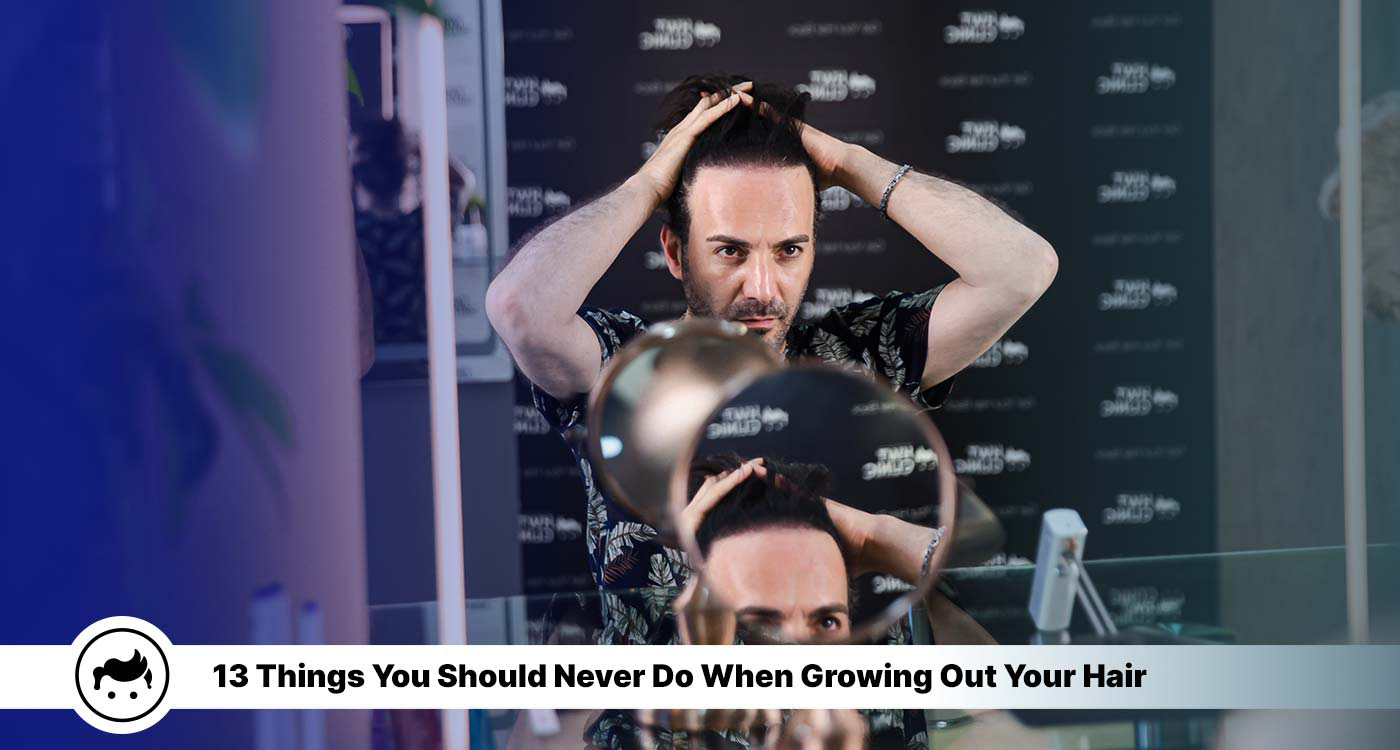
A hair transplant is a surgical procedure involving the transfer of hair follicles from a healthy portion of the scalp, known as the donor area, to a bald or thinning portion of the scalp, known as the recipient area. Typically, the procedure is performed to restore hair growth in areas where hair loss has occurred, such as the scalp, beard, and eyebrows. Certain things are avoided to ensure that the transplanted hair thrives and grows properly when growing out hair after Turkey hair transplant. It includes
Table Of Content
Washing hair daily when growing out hair after a transplant is not recommended, as it strips the newly transplanted hairs of their natural oils and moisture. It results in dryness and damage to the strands, leading to breakage. It’s better to wash hair twice or thrice per week with mild shampoos that won’t strip away too much oil. The importance of washing hair only a few times per week while growing out a hair transplant is to help keep the new hair follicles healthy. Overwashing disrupts the scalp’s natural pH balance and damage the newly transplanted hairs. Keeping the scalp clean and moisturized is key for successful hair growth. There are several pros and cons to washing hair less frequently. One of the main benefits is that it reduces the risk of infection, as the scalp is less likely to become irritated or damaged. Additionally, not washing hair as often helps to preserve the natural oils on the scalp, which leads to a healthier growth of new hair. However, there are some downsides. One potential drawback is that it looks oily until the body adjusts to the change in washing frequency. Additionally, it takes longer for the hair to fully recover if an individual goes long without washing it.
Using the wrong shampoo during the hair growth period after a transplant is detrimental to the procedure’s success. It is crucial to use a gentle, sulfate-free shampoo specifically designed after hair transplant surgery. The benefits of using the appropriate shampoo include protection for the newly transplanted hair follicles, stimulating hair growth, and moisturizing and nourishing the hair and scalp. Using the incorrect shampoo leads to damage to the transplanted hair follicles, impeded hair growth, and irritation or dryness of the scalp.
Harsh drying refers to high heat or strong airflow when drying the hair after a transplant. It damages the newly transplanted hair follicles and impedes hair growth. It is important to avoid harsh drying to ensure that the transplanted hair follicles have the best chance to grow and thrive. The benefits of avoiding harsh drying include minimizing damage to the transplanted hair follicles, promoting the healthy growth of the hair, and improving the overall appearance of the transplanted hair. Severe drying damages the transplanted hair follicles delaying the growth and making the hair appear uneven or patchy.
Failing to use the serums prescribed by the surgeon after a hair transplant is not recommended, as it impedes the growth and health of the new hair. The serums are crucial for nourishing and protecting the transplanted hair follicles and help reduce inflammation and itchiness. Not using them as directed results in dryness, irritation, slow growth, infection, and scarring. Following the surgeon’s post-operative care instructions is important for the best outcome.
Using silicone and sulfates on the hair after a hair transplant is generally considered a “don’t” because it is harsh and potentially damaging to the newly transplanted hair follicles. It is important to avoid the ingredients because they strip the hair of its natural oils, making it dry and brittle, which leads to breakage and damage. Additionally, they clog the hair follicles and inhibit healthy hair growth. Although silicone provides a temporary smoothing and conditioning effect for the hair, making it appear shinier and more manageable, it builds up on the hair over time, making it difficult to style and leading to hair that looks dull and lifeless. Sulfates are harsh on the hair and scalp, potentially causing irritation, dryness, and other problems. The ingredients are difficult to remove from the hair, making it harder to maintain healthy hair growth after a transplant.
Using hair ties when growing hair after a hair transplant is generally not recommended. Hair ties cause tension on the newly transplanted hair, potentially damaging the hair follicles and hindering growth. Avoiding hair ties is important because hair transplant surgery is a significant investment, and proper aftercare is crucial for achieving the desired results. The pros of avoiding hair ties include less stress on the transplanted hair and a higher likelihood of achieving optimal growth. The cons include not being able to style the hair as desired, which is a source of frustration for some. Overall, it is best to be patient and avoid using hair ties during the initial growth phase after a hair transplant to maximize the chances of achieving successful results.
Regular use of hot tools, such as hair dryers, flat irons, and curling irons, is not recommended when growing hair after a hair transplant. High heat damages the newly transplanted hair follicles, causing them to fall out or weaken. It is important to be gentle with the hair during the post-transplant recovery period to ensure proper growth. It is important to weigh the potential damage against the desired look while using hot tools to provide a desired styling effect. Alternatives such as air drying and low heat on hot tools are considered.
Ignoring the scalp after a hair transplant is important to consider when growing hair. Neglecting it results in damage to the newly transplanted follicles and compromise the success of the procedure. It is tempting to brush or comb one’s hair too frequently, but doing so causes tension that weakens the new grafts, resulting in their loss or breakage. Taking proper care of the scalp by avoiding rough treatments such as chemical products and tightly wound hairstyles help ensure healthy growth and successful results.
It is crucial not to handle the new hair too roughly when it comes to hair transplants. It means there is no need for excessive brushing, styling, or washing! Too much activity harms newly transplanted follicles and retard the growth process. Instead, follow the surgeon’s post-operative instructions for the best results. Despite the temptation to continue experimenting with a new look, it is essential to give the hair time to settle properly, so it grows.
Eating too much fast food is something to avoid when growing hair after a transplant, as it is unhealthy and does not provide the essential nutrients needed for healthy hair growth. Fast food generally contains high amounts of sodium, fat, and calories which harm overall health and well-being. Furthermore, it does not usually contain enough important vitamins or minerals for healthy hair growth. Therefore, eating a balanced diet with plenty of fresh fruits, vegetables, proteins, and whole grains is best to ensure proper nutrition for optimal hair growth.
Maintaining a constant hairstyle after a hair transplant is not recommended, as it prevents proper growth and damages new follicles. It allows for natural growth and healthier results in the long run, although it seems like the easiest way to manage newly transplanted hair. A consistent style strains the hair’s roots, leading to breakage or permanent damage. Natural growth with occasional trims and touch-ups is much better for the health of transplanted hair, while it requires more styling and care.
Individuals who have undergone a hair transplant are prohibited from wearing their hair down daily. It is difficult to care for newly transplanted hair properly, and allowing it to hang loose leads to breakage or further damage. Individuals have to maintain their transplanted hair to achieve the desired results. It is accomplished by tying it back. It protects the new follicles from contaminants such as dirt and smog. However, it takes longer to style the hair each morning before leaving the house.
Missing a hair appointment after a hair transplant is an important thing never to do. It is crucial to keep up with the appointments to ensure proper growth of the newly transplanted hair. It leads to complications and potential problems that ruin all the progress made with the transplant. Attending scheduled appointments provides peace of mind and ensures that professionals properly care for newly grown hair. Conversely, missing an appointment has significant financial and emotional consequences.
Hair growth is how individual strands of hair become longer and thicker over time. It occurs naturally as part of the body’s renewal cycle but is accelerated with lifestyle changes and treatments such as specialized shampoos and dietary supplements. The increased rate of hair growth is most commonly associated with improved health. However, it is seen in some people genetically predisposed to having thicker or faster-growing hair than others. Hair growth begins at the root, deep beneath the skin’s surface, in tiny pockets called follicles. Each strand grows from a single follicle for about two years before entering a resting phase that lasts several months before falling out completely. New cells form around the base of the follicle during the period of growth, pushing the existing hair shafts further up and eventually causing them to break through the scalp’s surface. The emerging hair continues to grow until it reaches its full length. Several factors affect the rate of hair growth. Eating a balanced diet rich in nutrients like iron, vitamin C, and B vitamins promote healthy hair growth, as the substances help nourish the follicles and keep them active. It is important to maintain good scalp hygiene by regularly washing the hair with gentle cleansers that do not strip away natural oils; regular trimming prevents split ends from forming and keeps the hair looking shiny and healthy.
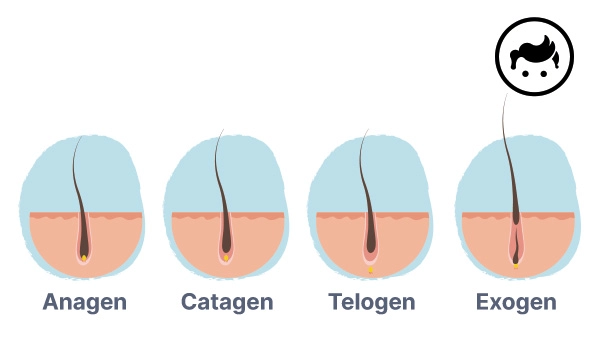
Additionally, reducing stress levels and protecting the scalp from sun damage help promote optimal conditions for strong, fast-growing hair. Many people turn to special products to speed up their hair growth. It ranges from herbal supplements containing ingredients such as saw palmetto, nettle leaf extract and fenugreek to professional topical treatments using minoxidil or platelet-rich plasma (PRP). Many users have reported an increase in both thickness and length after incorporating one or more of the methods into their daily routine, while results vary depending on individual circumstances. Generally, hair growth is a complex yet the natural process that involves continual cell formation and shedding of old hairs.
A hair transplant is a surgery that helps people who have lost their hair due to heredity, age, or illness. It works by taking healthy hair follicles from another part of the body and then surgically implanting them in areas with thinning or balding patches. Hair surgery is often performed on people with male pattern baldness and other forms of alopecia (a medical condition causing hair loss). The goal of the procedure is to give the patient fuller, thicker-looking locks which are natural looking. Hair transplants involve harvesting donor hair from one area and grafting it into another. Local anaesthesia is used to numb the scalp area where the incisions are made during the process. A surgeon then makes tiny cuts in the skin and places each hair follicle into its slit. The new follicles take several weeks before they start producing new growths. They last for years with proper care once the hairs do grow out. Turkey hair transplantation has become more popular over time, thanks to technological advances allowing surgeons to carry out procedures with greater precision. Turkey is a popular destination for individuals seeking affordable and high-quality hair transplant procedures. Turkey hair transplant cost is relatively lower compared to many Western countries, making it an attractive option for those looking to restore their hair. Turkey hair transplant cost can vary depending on various factors such as the clinic’s reputation, the technique used, and the number of grafts required. Many people find that opting for a hair transplant in Turkey provides a cost-effective solution without compromising on the quality of the procedure. Most people who undergo hair surgery report significant improvements in appearance, while results vary between patients. Some people even experience full coverage of bald spots after just one treatment session. It’s important to remember that not everyone is suitable for a hair transplant. The procedure has some risks, such as infection, scarring, swelling and an unnatural-looking result if done improperly. Additionally, any post-surgery effects like bleeding and discomfort are considered when deciding whether or not to proceed with the procedure.
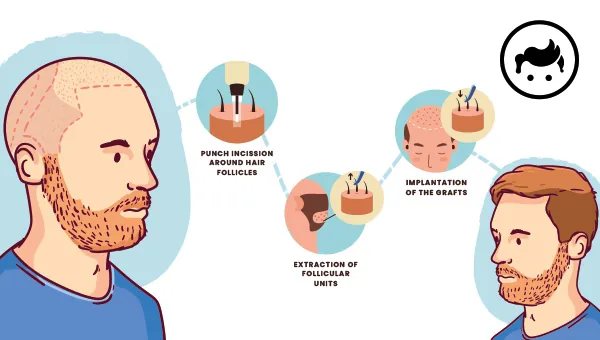
Growing out newly transplanted hair is a long process, but there are some easy steps to take that help to get the best results. Let’s go over all the tips and tricks for successful hair growth, from setting up good habits with the hair care routine to finding products that work best for the scalp and new follicles.
Things to do with newly transplanted hair while growing it out:
How to grow out my hair faster:
Therefore, a hair transplant is one effective way to achieve the appearance of thicker, fuller hair. However, it’s important to note that post-surgery care, including proper nutrition and stress management, plays a key role in promoting the growth and strength of new hair. Incorporating techniques such as scalp massage, regular trims, and gentle hair care products helps boost the health and vitality of newly transplanted hair. Overall, there are many ways to make your hair grow faster and stronger after a hair transplant. It’s essential to work closely with a surgeon and follow their recommendations to ensure the best possible outcome.
Yes. It is generally recommended to grow the hair out after a hair transplant procedure. It allows the transplanted hair to fully integrate with the existing hair and achieve a natural-looking result. Additionally, growing hair out helps to conceal any visible scars or incision sites from the procedure. However, it’s important to remember that hair growth takes several months. One needs to be patient and follow any post-operative instructions provided by the surgeon to ensure the best outcome.
Yes, growing hair for men and women is different. Growing out hair for men requires more patience and maintenance as men’s hair tends to be shorter and thicker. Contrary to that, growing out hair for women often requires less maintenance, as women’s hair tends to be longer and finer. Additionally, men have to deal with a “growing out” phase where the hair is an awkward length, which is not as much of an issue for women. Men have to deal with different hairstyles and grooming habits as they grow out their hair, while it is not as much of an issue for women.
Yes, it is possible to style hair while growing out after a hair transplant, but the type of hairstyle and the length of the hair depend on the stage of the hair growth and the individual’s preferences. The hair typically starts to grow at around 2-3 weeks after a hair transplant, but it takes several months to grow fully. It’s important to avoid any hairstyles while growing out hair that put stress on the newly transplanted hair during the time, such as tight ponytails or braids. For men, hairstyles worn while growing out hair include short buzz cuts, side parts, crew cuts, slicked back, and messy hairstyles. The hairstyles are low maintenance, easy to style and help camouflage the thinning hair during the growth phase. For women, hairstyles worn while growing out hair include a bob, lob, pixie cut, and messy updos. The hairstyles help to conceal the thinning hair during the growth phase and are easily changed as the hair grows. It’s important to consult with a hair transplant surgeon before styling the hair after a transplant, as they are able to give specific advice based on individual cases.
Hair growth after a hair transplant is affected by several factors. It includes the surgeon’s skill in performing the transplant, how well an individual takes care of the scalp and hair afterwards, genetics, age, health, stress levels, hormones, diet, and medications. Some people experience temporary shock loss or shedding before seeing new growth; that is just some of the factors that affect hair growth; there are still factors in rare cases. It is important to give enough time to see results, as it takes up to one year for transplanted hair to reach its full potential.
Generally, patients have their first post-operative appointment within the first week after the Turkey hair transplant procedure. The doctor checks for signs of infection or other complications and removes any non-dissolvable stitches during the appointment. They provide instructions on how to care for the new hair and scalp, including information on when it is safe to wash the hair and how to avoid activities that cause damage to the transplanted hair. Follow-up appointments at 2-3 weeks, six weeks, three months, and six months post-op are common. The doctor prescribes medications such as antibiotics or anti-inflammatory drugs to aid healing. It is important to note that the transplanted hair does not immediately grow; it takes around 3-4 months for it to fall out and new hair to start growing. The doctor monitors the progress and guides how to care for the new hair as it grows. Follow-up appointments are important to ensure proper healing and address any potential complications, and the timing of the appointments varies.
